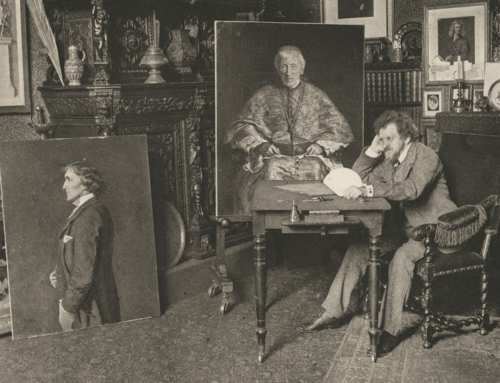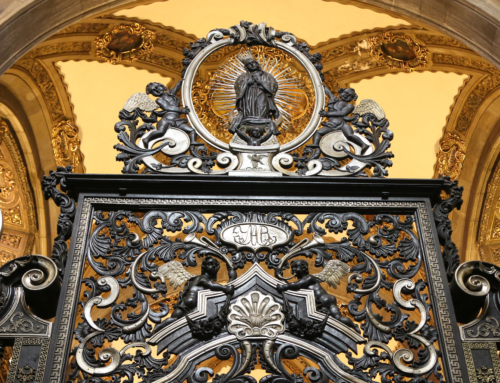Reading the autobiography of St. Thérèse, one is struck by the prominence of her family in the story of her soul. The whole work was begun at the request of her sister, Pauline, her religious superior at the time, and over half of the book concerns either Thérèse’s home life or the affairs of the Martin family during her first years as a Carmelite. For material about her early childhood Thérèse relies heavily on letters written by her mother Zélie. Thérèse’s four elder sisters figure large in the narrative of her childhood and adolescence, since they cared for and educated Thérèse in turns after their mother’s death. The patriarch of the family, Louis Martin, Thérèse’s “dear King,” became dearer to his daughters in his wife’s absence. Later he would grant his youngest daughter’s wish and advocate for her entry into the convent at the age of fifteen.
The children of the family display a remarkable religiosity. Addressing Pauline, Thérèse recalls her daily routine after her mother’s death:
In the morning you used to come to me and ask me if I had raised my heart to God, and then you dressed me. While dressing me you spoke about Him and afterward we knelt down and said our prayers together.
Elsewhere Thérèse describes how she and her cousin would play “hermit”:
[We] had nothing but a poor hut, a little garden where we grew corn and other vegetables. Our life was spent in continual contemplation . . . one hermit replaced the other at prayer while she was occupied in the active life.
All this piety didn’t come from nowhere. Thérèse mentions that it was her mother who first taught her a “little formula” for making her morning offering. And her father was constant in teaching his children to love God and to perform works of mercy. She writes,
Each afternoon I took a walk with Papa. We made our visit to the Blessed Sacrament together, going to a different church each day, and it was in this way we entered the Carmelite chapel for the first time . . . During these walks, he loved to have me bring alms to the poor we met on the way.
This portrait of the Martin family recalls the notion of “the domestic church.” Lumen Gentium teaches, “The family is, so to speak, the domestic church. In it parents should, by their word and example, be the first preachers of the faith to their children” (§11). The Catechism goes on:
The family is the “domestic church” where God’s children learn to pray “as the Church” and to persevere in prayer. For young children in particular, daily family prayer is the first witness of the Church’s living memory as awakened patiently by the Holy Spirit. (§2685)
An adolescent Thérèse witnessed firsthand the capacity of children for God. She reflects on her encounter with three little ones:
It was a great pleasure for me to see with what simplicity they believed everything I said. Holy baptism must implant a very deep seed of the theological virtues in souls . . . I spoke to them about the eternal rewards that little Jesus would give in heaven to good little children; the older one, whose reason was beginning to develop, looked at me with eyes that were bright with joy, asking me a thousand charming questions about little Jesus and His beautiful heaven.
Such faith is a gift from God and is focused on God. Unlike jogging or lifting weights, which are actions that concern only their practitioners, acts of faith are in a certain sense transitive—that is, the gift of faith goes out from the faithful and touches God. Thus faith establishes a vital rapport between God and man, enabling him to live his whole life, even in its ordinariness, in the company of the good Lord—le bon Dieu. Only such a personal relationship with “the good God” could sustain the persistent and joyful piety of Thérèse and her family.
The United States Conference of Catholic Bishops has posted a list of “tools for building a domestic church.” In fact, almost all of these directives were embodied in Thérèse’s family. Thérèse’s parents even abundantly fulfilled the rest of the prescription from Lumen Gentium cited above: “[parents] should encourage [their children] in the vocation which is proper to each of them, fostering with special care vocation to a sacred state [of life]” (§11). All five of the Martin children who survived childhood became nuns. The parents themselves were beatified by Pope Benedict XVI on 19 October 2008.
So if one wants to build or to renovate a domestic church, he or she could do worse than to read St. Thérèse. And why not pray to her on her feast day? Sainte Thérèse, priez pour nous.
✠
Image: Les Buissonnets, the home of the Martin family at Lisieux







